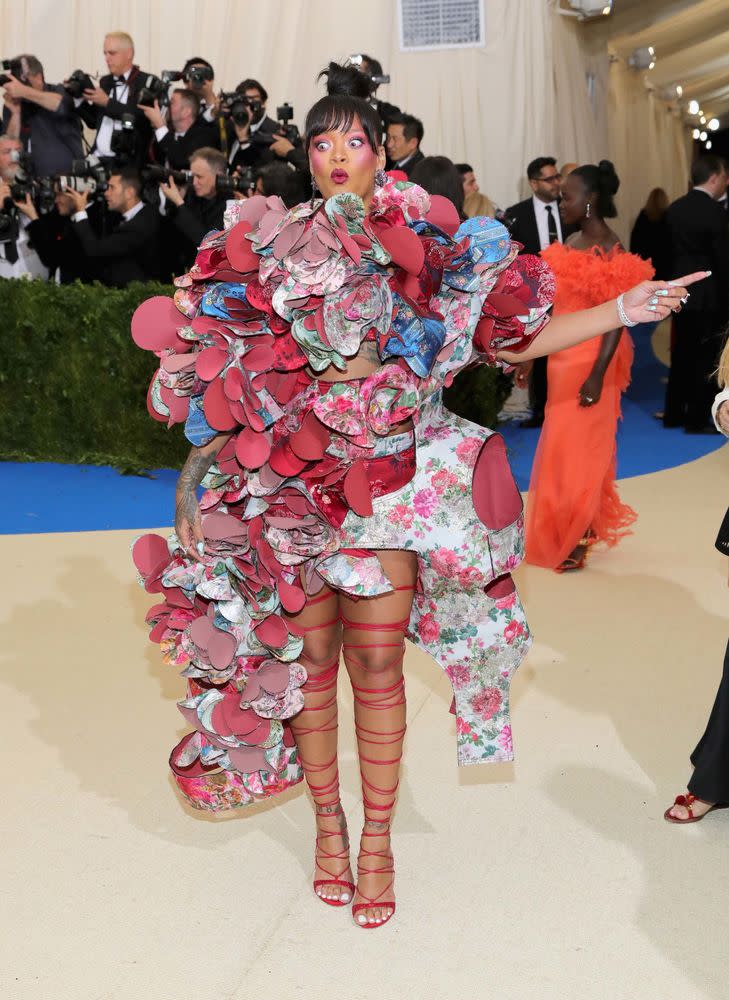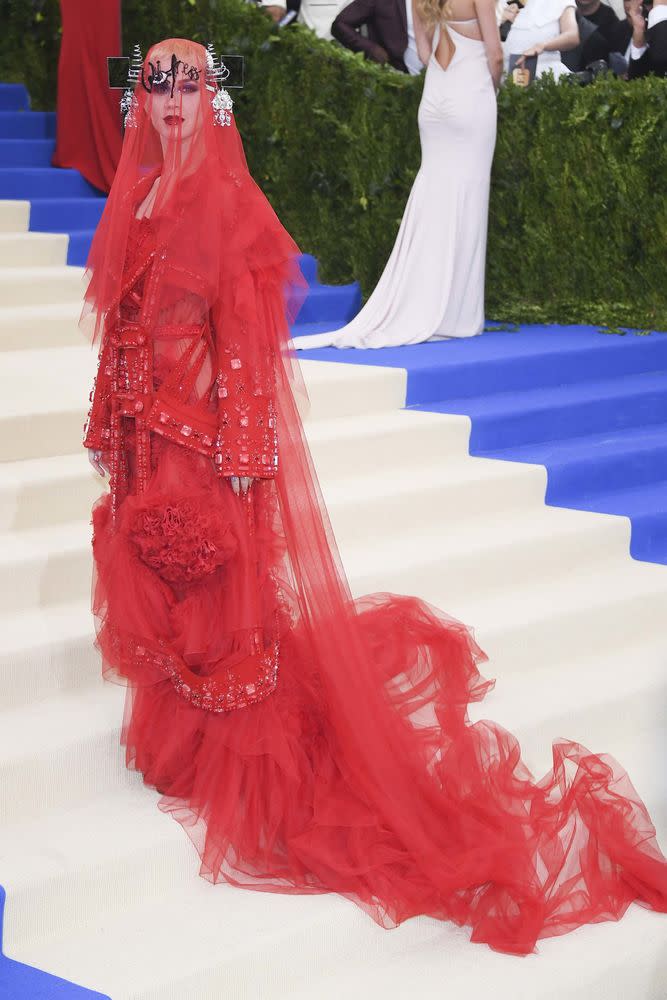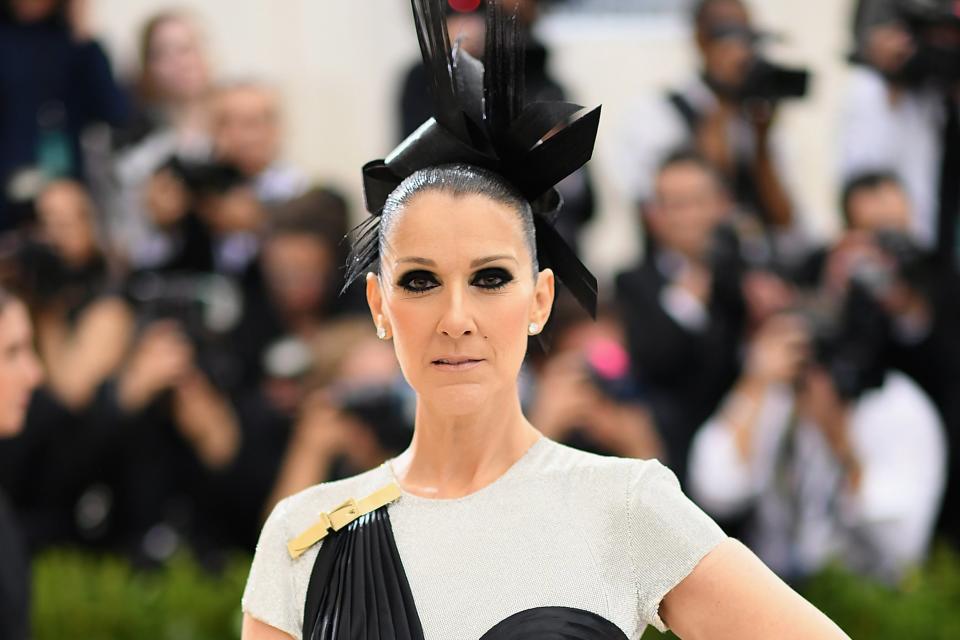How I learned to love the Met Gala!
Oh. Okay, I see. You think this has nothing to do with you.
For most normal people, the closest they’ll ever get to the Met Gala is a lost night of drunken dress-up featuring a decade’s worth of problematic college Halloween accessories inexplicably retained. But for the Hollywood elite (the only time it’s accurate to invoke that phrase), New York’s annual event on the first Monday in May is but a stretching exercise for the limits of celebrity privilege. And that’s quite a good thing.
Hosted by the inimitable but also extremely imitable Anna Wintour, the Met Gala is a chance for all the Rihannas and Riz Ahmeds of the world, the Nicole Kidmans and Nick Jonases, and all the rest of Sarah Jessica Parker’s favorite elf spirits to tread terra firma and show the world just how far they can push the zeitgeist’s boundaries of taste and textile. No train is too long, no fabric too chunky, no pattern too busy, no headpiece too bound by the laws of physics. It’s the kind of place where the tuxedos are tessellated, the dresses are atomic, and everyone in attendance looks like they’ve skinned a Pokémon.
I’ve only recently come to realize the power of this extravagant and arguably extraterrestrial event. Most other year-round fashion shows generally fall to the pop culture wayside when it comes to public interest. They bear the same optics that mass audiences tend to ignore and (in some distant way) even fear: the unreachable bodies, the unattainable style, the laughably impossible price tags of items you won’t even eventually see trickle down into a Target. And yet the Met Gala is the one fashion show that demands attention. Celebrities we recognize replace models we don’t, and their experiments in costuming offer an intriguing test to their connection to the public. It’s an event about exploring the tenuous limits of that celebrity-audience liaison, manifested in what has now become a three-hour-long social-media meme carnival that embodies the insolubility of why the zeitgeist hungrily chooses to swallow some and spit out others. This annual ball, gone by Tuesday like a couture Brigadoon, can feel outwardly alienating, until you realize that we all have at least one horse in this big vogue race.
The Met Gala offers us all the chance to become instant fashion commentators, but specifically hobbled on an equal playing field of ignorance rather than an elevated field of expertise. No one is cool judging the Met Gala! And no one is cool judging those who judge the Met Gala! Even those who are actually able to pinpoint couture in a Kohl’s line-up win mere popular-vote points in the overall electoral college that determines the evening’s “wins” and “losses.” The rules of the Met Gala offer the kind of capricious, oft-illogical criteria of popularity that have echoed on playgrounds for decades. They are rules unwritten—and understandably so, as culture increasingly wavers on what it means to come out a winner of this random red carpet. It’s a circus where the most outrageous wins, but too outrageous gets you chided. The beautiful get weird, and the weird get weirder, until the weird get so weird that they’re suddenly deemed beautiful by virtue of being so confident in their weirdness. If you weird-bait, you’re trying too hard; if you don’t get weird enough, perhaps you’re not trying at all. The difference between not enough and too much has no logic here.
Add to this mix the selection of a prestige theme, represented in a spectrum of outfits with an accuracy that curves graphically from “I Googled this last month” to “We do this regularly on my home planet.” As this whole spectacle’s visibility has grown larger, the actual discourse of the themes matter even less. (An edit from 2019: Notes on Camp is probably not going to elicit a thoughtful debate on what constitutes camp so much as it will spark an uproar over who missed the point completely and went as a Winnebago).
It’s all just such a papier-mâché Narnia s—tshow, isn’t it? And best of all, the celebrities who go and willingly subject themselves to these meme Olympics are the reason the Met Gala has become such a fun exercise in creativity, conceptualization, and the limits of self-seriousness.

Take Rihanna, who was arguably crowned queen of 2016’s event after her canary-yellow gown stole 2015’s show (yes, even from Beyonce’s sheer bedazzled Betty Spaghetti). Rihanna’s arrival in 2017, then, came with a palpable anticipation and almost insurmountable expectation. Did she deliver? We’ve decided, yes. Why? We’ve decided, she just did! It does not matter that she wove together an ensemble of elementary school Valentine hearts with the leftover shreds of Kim Kardashian’s 2013 maternity fabric. Because it’s beautiful! And it’s weird! And it might fit the theme, maybe!? Scholars more qualified than I will debate her outfit’s merits, and scholars less qualified will, too, and that’s the beauty of the Met Gala: a sort of agreed-upon collective consciousness where dissenting opinions are lost in someone’s winning ruffles, which, at any other event during the year would be ridiculed, but at the Met Gala are deemed a stroke of genius.
PHOTOS: See All the Stars’ Red Carpet Fashion at the Met Gala
Then we turn to Katy Perry, who famously stunned at this event in 2010 just months before Teenage Dream was released and changed her place in the pop culture game forever. Six years later, she drew jeers for looking like a goth Prada treasure chest, and this year she was back on the de facto worst-dressed list for wearing a canopy bed in a horror movie. What happened? Nobody knows! Will she slay next year? Maybe! Are the sartorial arguments of the Met Gala wholly unhinged? Yes!

And there are so many more stories in between the Rihanna-Katy poles. Solange literally went as a sleeping bag one year, and everyone went wild. Blake Lively wore a stunning Versace-meets-Anne-Hathaway’s-character-in-Rio gown yet wound up “dishonoring the theme,” some ruled. Jaden Smith brought his actual chopped-off hair as his plus-one! Celine Dion wore a T-shirt under a bathing suit! Even the Olsen Twins Apparated in for the event!
Nowhere else in Hollywood do we get the same potent mix of fun, danger, and — especially in recent years — a distraction from the nation’s actual human problems. The same argument can’t be made as conclusively or consistently for the other red carpets of our time. At the Oscars and Emmys, elegance is expected and deviation is rarely accepted. The Grammys and VMAs draw sublime character from bold musicians, but those choices are often more for shock value than a discourse of Haute style. I’m not saying that letting Tracee Ellis Ross drape herself in a sheet at the Met Gala is going to change the world, but it’s an opportunity to watch celebrities we love burst or dazzle or brood in a way that feels exempted from the 364 other days of the star-machine gauntlet.
Perhaps the real winners of the Met Gala are the celebrities who stay home—but the abstract laurels are boundless for those who do take the leap, pose for a few thoughtful photographs on low-octane staircases, and hope to emerge victorious at this wild conflagration of celebrity peril and a worldwide audience of backseat Wintours. Met Gala Twitter is a mess of everything you hate about the social network, but it’s also everything you love about it, and all is forgiven by morning’s light, enshrined in time and remembered fondly like drunken texts sent in the waning hours of a milestone birthday. The Met Gala is a fashion fever dream that bonds us in inanity. They call it the party of the year, and you too can learn to love the Met Gala once you realize that they’re not actually talking about the people going.


